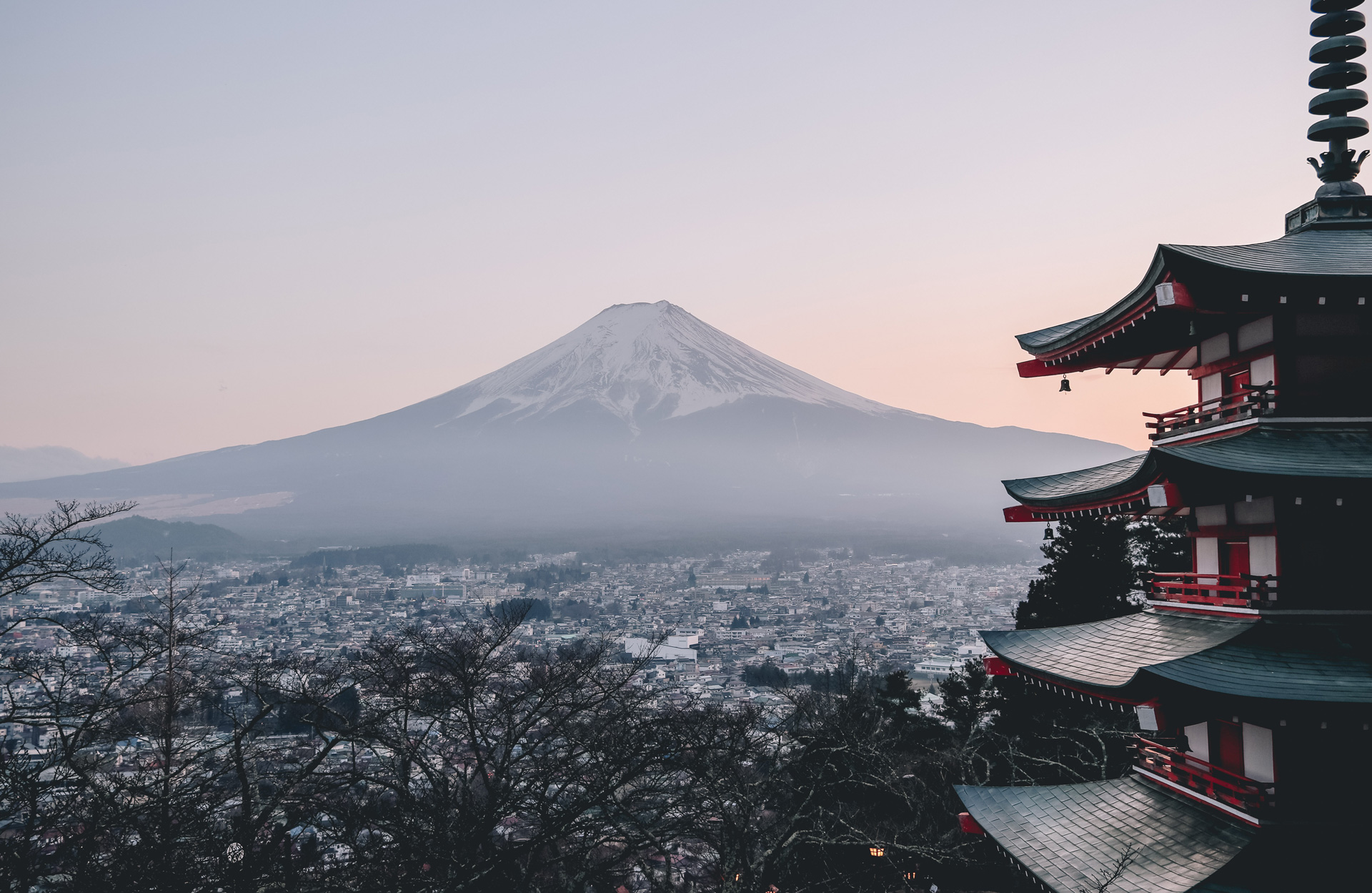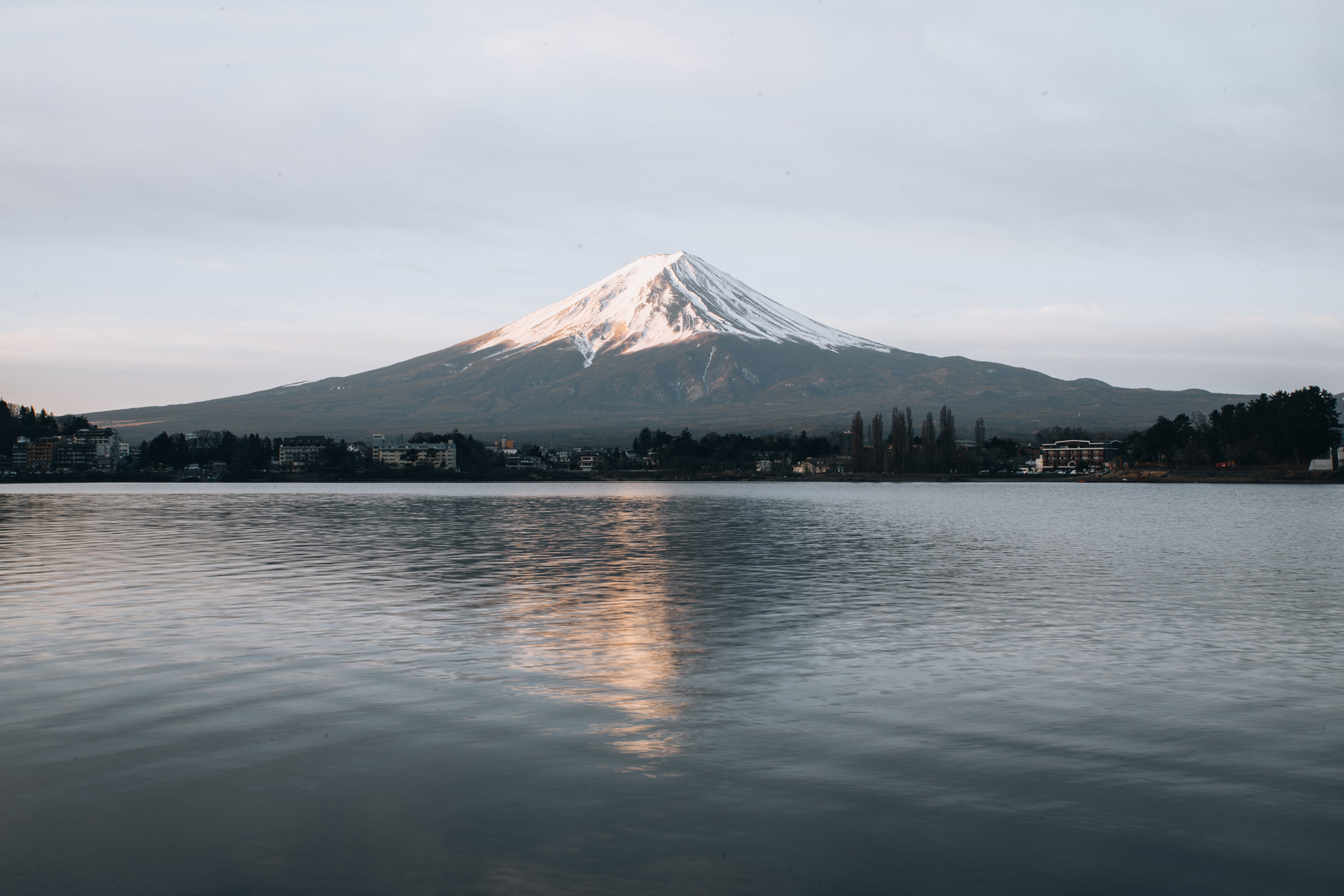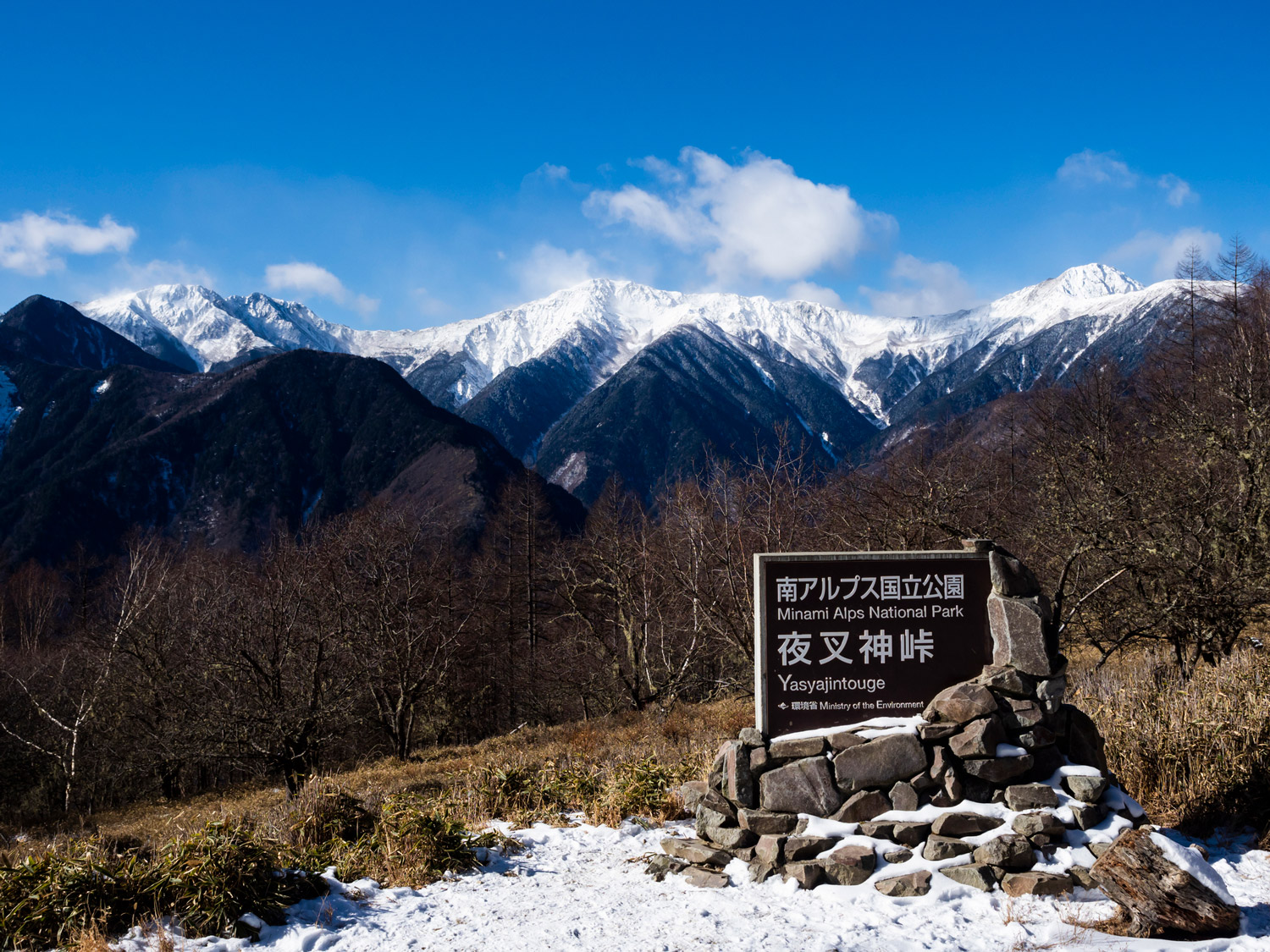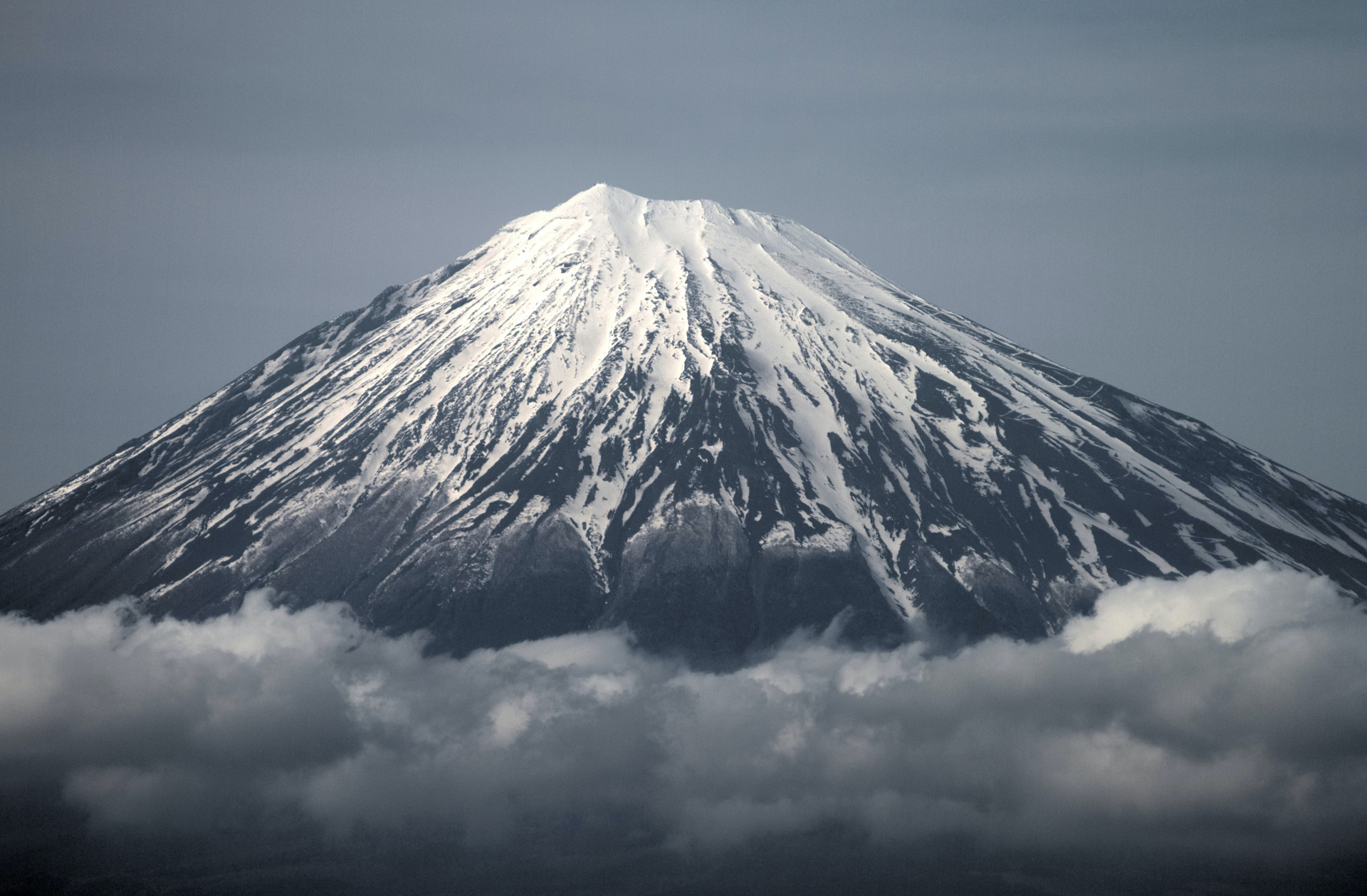The highest mountain in Japan is Mount Fuji. With its summit 3776 metres above sea level, the active volcano roughly 100km southwest of Tokyo is one of the most famous mountains in the world. The peak is one of three sacred mountains in Japan and a popular destination for intrepid hikers. We’ll tell you more about Mount Fuji shortly but before then, how much do you know about Japan’s other high mountains? Do you know the name of Japan’s second highest mountain? Or it’s third highest mountain for that matter? If you answered “Help me. I know nothing” to either of those last two questions, fear not. This is our very useful guide to the five highest mountains in Japan.
With approximately 73% of the land in Japan being considered mountainous, the country is the ultimate adventure destination for people who love mountain climbing.
According to the Japanese Alpine Club, there are 16,667 mountains in Japan. Depending on who you listen to and how you count mountains though, there are even those that say the country is actually home to over 18,000 mountains. Obviously, we haven’t got time to discuss every single one of Japan’s mountains in depth but hopefully this guide to the highest of them will at least whet your appetite somewhat .
If you like the outdoors, you’ll love Japan.
1) Mount Fuji – 3776m

A climb to the summit of Mount Fuji usually takes between five and ten hours. Most people looking to climb it start their ascent at Kawaguchi-ko 5th station. From this point on the mountain, it should take you somewhere between and six hours to get to the top. To avoid any form of altitude sickness en-route, it’s advised that you climb at a calm and steady pace.
Taking your time will not help you acclimatise to the altitude, it will also give you more time to enjoy some truly spectacular scenery. On a clear day, you’ll get the most unforgettable views of Japan. If you don’t mind cutting down on sleep, and getting out the head torch, many people love getting as high as possible on Fuji in time for sunrise. Japan, after all, is known as the “Land of the Rising Sun.”
Official climbing season on Mount Fuji runs from early July to mid September. During this period of the year, the weather is far more suitable for climbing, the mountain is usually free of snow, and the mountain huts are in operation. If you haven’t got much hiking experience, stay clear of tackling Fuji outside of climbing season.
Between October and mid June, climbing to the summit of Mount Fuji becomes a much more perilous pursuit. Extreme wind and weather conditions, snow, ice, and avalanche risk are all a reality. Approach climbing the mountain at this time of year with the utmost caution.

Due to its iconic nature, Mount Fuji is unsurprisingly a very popular attraction with both Japanese and foreign tourists alike. In the school holidays here, which run from the 20th of July to the end of August, Fuji can get seriously busy. During Obon Week, which is one of Japan’s three major holiday seasons alongside New Year and Golden Week, you’ll end up queueing on certain parts of the mountain. You’ll meet some interesting people doing this, but you’ll also spend a lot of time standing around.
To beat the biggest crowds, you’re best of climbing Mount Fuji on a weekday in the first half of July – before the schools break for summer. The weather will be slightly more unpredictable at this time of the year but, on the plus side, you’re unlikely to get stuck in those big queues.
Mount Fuji is split up into 10 stations with the first of these being at the bottom and the 10th and final one – unsurprisingly – being located at the top. There are four 5th stations. These are located halfway up the mountain and represent the starting locations for the four different trails up Fuji: Yoshida, Fujinomiya, Subashiri and Gotemba.
Located on the island of Honshu, which is Japan’s largest and most populous island, Mount Fuji is an active stratovolcano. It last erupted in the early part of the 18th century (1707-1708). This 300-year stretch of silence from Fuji is longer than the previous interval of around 200 years.
The Japanese government has simulated what would happen if Mount Fuji was to erupt again, and have come to the conclusion that Tokyo could be shut down in a matter of hours. A worst case scenario would see 17.3 billion cubic feet of ash rain down on Tokyo and the surrounding area.
2) Mount Kita – 3193m

The highest non-volcanic mountain in Japan is Mount Kita (Kita-dake). Kita-dake is located in the Yamanashi Prefecture, and its summit is 3193 metres above sea level. It is situated within Minami Alps National Park, close to the city of Minami-Alps.
Less crowded than Mount Fuji, this mountain in the north of the Southern Japanese Alp is the main peak of the Shirane Three. The Shirane Three consists of Mount Kita-dake, Mount Aino-dake, and Mount Notori-dake.
The view of Mount Fuji, the highest mountain in Japan, from the summit of Kita-dake is arguably the best one in the country. A ‘golden hour’ look at Fuji from the high places of Kita-dake, it’s worth saying, is one you’ll never forget. Bring a camera. You’ll want to be taking photographs up here.
People usually climb Mount Kita-dake from Hirogawara. Hirogawara, especially during the summer season, is the main base for climbing the mountain. To get to Hirogawara, you’re looking at a two hour bus ride from Kofu City. Kofu City is roughly 90 minutes from Tokyo via train.
Unless you’re an experienced expert-level climber, you should only really consider trying to ascend it in the summer months. In the winter, the snow can get pretty deep and frozen ridge lines become a real hazard. The lodges, it’s worth adding, are only open during the summer season so that’s something else to consider if you’re planning to take this mountain on.
One popular way to summit this mountain is known as the ‘Mount Kita-dake Loop from Hirogawara’. It takes 11.5 hours, and is best completed over the course of two days. The majority of the walking on this route, 75% roughly, occurs on the second day. Spend your first night at the Shiraneoike-goya mountain, and get the rest of the climb and your return journey done on day two. Wake up bright and early on the second day, and bask in the glow of a sunrise on one of Japan’s highest points.
The Kitadake Buttress (Kit-dake Battoresu) is a tall 600 metre rock face on the eastern side of the mountain. Japan’s second highest mountain is rich in plant life, especially on the southeastern slope on the route that runs to Mount Nakashirane. The area’s abundance of plants is also noticeable on the Kusasuberi and Migimata courses along Shiraneo Pond.




